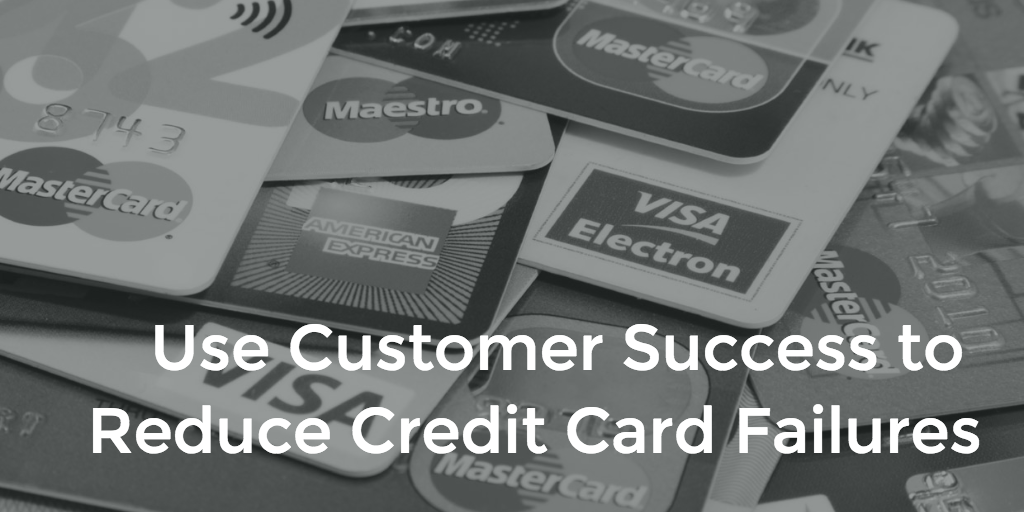
So when I got this question in the comments section of one of my churn rate posts and started to answer, it turned into a post all its own.
The question was: “How is it possible to keep churn rates under 3% when we have an average of 10-15% in failed payments from Stripe and PayPal? Or are failed payments not to be included in the total churn?”
There’s a lot going on in that question… and the answer is far from simple.
And while this post is about Credit Card failures – the lessons herein relate to any subscription company that takes credit card payments and for any SaaS company, whether they accept credit card payments or not.
At the core of this post is the notion that a failed payment doesn’t mean the customer has churned… yet. Let’s start from there.
The reality is…
Sometimes Payments Fail and Cards Expire
Credit cards do expire (though Stripe updates card info for stored cards directly from the bank, which is just one of many reasons to use them), and sometimes payments fail because accounts are closed, info changes, or other anomalies that don’t always mean the customer is insolvent and on the verge of bankruptcy.
Which is why I say a failed payment or expired card doesn’t mean the customer has churned… yet.
So unless you really want that to be the case – “if your payment fails or your card expires you’re gone” does seem to be the way some companies want to operate – then that shouldn’t be the point where they are not a customer anymore.
But that does require us to consider…
When a Customer Isn’t a Customer Anymore
Clearly at some point – after going through the dunning / collections process and not being able to get an updated card or a payment from the customer – you will have to consider them no longer a customer, though what exactly that point is varies from company to company.
How lenient you are with the customer is totally up to you; you can immediately turn off access until the payment situation has been resolved, continue to allow access as long as they never fall more than x months behind, etc.
Whatever that milestone is, when you determine them to no longer be a customer, it’s at that point that you’d add them to the “churned” category and include them in your churn calculations and reporting.
Before that point, they aren’t “churned;” but they should be classified some other way. Perhaps they’re now “at-risk.” In more complex Customer Health Score or Success Vector (my preferred method of understanding what’s going on with a customer) calculations I recommend including payment information as it speaks to how they view you as a vendor (more on this shortly).
Regardless of how they’re classified now and how we’re trying to resolve that, our goal should be…
Don’t let Credit Cards Expire
Credit cards have an expiration date, but we don’t have to wait around for the card to expire before we get the customer to update their info.
Again, Stripe should handle updates to existing cards without intervention from the customer assuming nothing else changes (and everything goes right); but for other processors and for situations where that might not work for some reason, we need to be proactive and not let cards hit that expiration point.
If we know a card is going to expire in January, and we can assume credit card companies will send out new cards 30-60 days ahead of the expiration, then we should start letting the customer know 30-60 days before – in November or December of the previous year – that the card expires that they need to update their info.
And keep notifying them – leverage different channels: email, phone, SMS, in-app on the next login or during their session, chat, etc. – until they update the card.
By the way, there are several pre-dunning products in the Stripe ecosystem that do this for you; check those out for sure.
No matter what modality, we want to…
Get ’em to Drop Everything to Update their Payment Info
If you’ve made sure your product is super-valuable to the customer, when they get the message from you that their card is going to expire, has expired, or their payment otherwise failed to go through, they’ll drop everything and update their card so they don’t miss a beat with your product.
be so valuable to your customers that when their credit card expires or a payment fails, they drop everything and fix the issue immediately
— Lincoln Murphy (@lincolnmurphy) December 11, 2015
Another thing to consider is that sometimes customers have to make a decision – due to cash flow issues – about which vendor they’re going to pay this month.
In addition to ensuring they update their payment info when card details change, when it’s more about them having to decide who to pay, we want to make sure we’re consistently at the top of their vendor list so we get paid first.
And this is how…
Customer Success Reduces Payment Failures
Customer Success is when your customers achieve their Desired Outcome through their interactions with your company.
Ensure your customers are continually achieving their Desired Outcome through their interactions with all aspects of your company – and make sure you’re reporting this back to them so they’re fully aware of this, too – so when their payment fails or a card expires, they will drop everything to make sure you get paid.
Cards expire and payments fail… but customers that are achieving their Desired Outcome tend to not want to stop doing that, ensuring that payment glitches and card changes are resolved quickly and financially-based tough decisions are made in your favor.
Just another small way an investment in Customer Success keeps on giving.